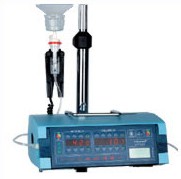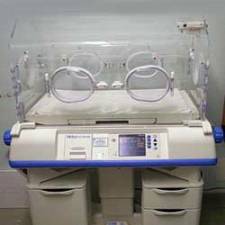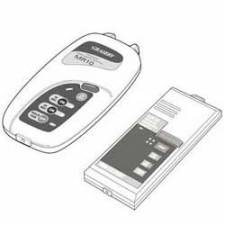Article by Mr. W.O.M.Davis
I.Eng. F.I.I.E.
wom.davis [at] ntlworld [dot] com
Panel Chairman - Special interest group I.I.E.
General
Optimal infusion, is the ability to reliably deliver the prescribed drug dose/volume to the patient, at pressures which overcome all baseline and intermittent resistance, but cause no harm to the patient.
Infusion giving pathway
 The small bore (internal diameter) and kinking potential of connecting tubing, cannula, needles, and patient vessel's (phlebitis) all cause additive resistance to infusion flow. This along with filters, sticky (viscous) solutions and syringe/cassette stiction can accumulate to the extent that infusion pumps are required to accurately deliver prescribed drugs to patients. These pumps must be capable of delivering infusions at pressures of between 100 and 500mmHg (2 to 10psi) A small car's tyre pressure is 26 psi! Ideally pumps should also reliably detect the infusion pressure and the presence of air in the line close to the patient vessel being infused.
The small bore (internal diameter) and kinking potential of connecting tubing, cannula, needles, and patient vessel's (phlebitis) all cause additive resistance to infusion flow. This along with filters, sticky (viscous) solutions and syringe/cassette stiction can accumulate to the extent that infusion pumps are required to accurately deliver prescribed drugs to patients. These pumps must be capable of delivering infusions at pressures of between 100 and 500mmHg (2 to 10psi) A small car's tyre pressure is 26 psi! Ideally pumps should also reliably detect the infusion pressure and the presence of air in the line close to the patient vessel being infused.
Gravity Drip
The pressure available from a bag of saline = the height the bag is above the patient's heart.
If a saline bag is 68cm(27") above the patients heart the infusion pressure available is 50mmHg(1psi).
If the bag is twice that height above the patient 136cm (54") the available pressure is 100mmHg(2psi)
Pressure in context
If we are seeking to ensure that our IV infusion devices are compatible with pressures found in the patient's venous system then we need to be clear as to where in a range of pressures, the venous system lies. This will enable us to determine whether or not an IV pump pressure setting is going to be compatible with venous pressure at the IV site.
| Pressure (mmHg) | Example (rounded pressure values) | Pressure (psi) |
|---|---|---|
| 2 - 20mm Hg | Central Venous pressure range | 0 - 0.4 psi |
| 10 - 30mm Hg | Peripheral Venous pressure range | 0.2 - 0.6 psi |
| 100mm Hg | Extravasation risk | 2 psi |
| 100 - 150mm Hg | Systolic Arterial pressure range | 2 - 3 psi |
| 75mm Hg | Gravity pressure of fluid 100cm above cannulation site | 1.5 psi |
| 500mm Hg | Highest probable pressure required by an infusion pump | 10 psi |
| 1,000mm Hg | Maximum modern / Ambulatory pump occlusion pressure setting | 20 psi |
| 3,000mm Hg | Common max. pressures form older peristaltic pumps | 60 psi |
The four most common types of infusion pumps used within hospitals.
- General-Purpose / Volumetric
- Syringe Drivers
- Patient controlled analgesia (PCA)
- Ambulatory
General-Purpose / Volumetric Pump
Utilise a linear peristaltic action or piston cassette pump insert to control the prescribed infusion volume. They are used to accurately administer intravascular drugs, fluids, whole blood and blood products. And can administer up to 2,000ml of fluid (normally from a bag or bottle) at flow rates of 0.1 to 2,000ml/hr.Syringe Drivers
Utilise an electronically controlled, electric motor to drive the plastic syringe plunger, infusing the syringe contents into the patient. They effectively replace the Doctor or Nurses thumb by controlling the speed(flow rate), the distance (volume infused) and the force (infusion pressure) that the syringe plunger is pushed. The operator must use the correct size of syringe, make sure it is properly in place and frequently monitor that it's delivering the expected drug dosage. Syringe drivers administer up to 100ml of drug at flow rates of 0.1 to 100ml/hr.Patient controlled analgesia (PCA) Pump
Is a Syringe driver that allows the patient, within defined limits, to control their own drug delivery. They employ a patient hand control, which when pressed, delivers a pre-set bolus of analgesic drug. Immediately after delivery the pump will refuse to deliver another bolus until a pre-set time has passed. The pre-set bolus size and lockout time, along with background (constant drug infusion) are pre-programmed by the doctor.Ambulatory (portable)
Small, light, battery powered syringe or cassette mechanisms. Many of the units in-use have only minimum alarms, therefor both patients and carers should be particularly vigilant in administration observations. Consideration also has to be given for the hazards a portable devices is exposed to e.g. knocks, fluids, electro-magnetic interference etc. In general critical drugs which require constancy of flow should not be administered using ambulatory pumps.General
Many pumps operate from battery and mains electricity. They incorporate warnings and alarms of excessive upstream or downstream pressure, air in tube, syringe empty/ nearly empty and low battery. Normally the total volume of fluid to be delivered can be set, and following delivery an end of infusion, KVO (keep vein open) flow of 1 to 5 ml/hr will continue to infuse.Modern infusion pumps (clever as they are!) require frequent monitoring to ensure that they are delivering the prescribed treatment. Free flow of fluid due to incorrect housing of pump insert or syringe is a common cause of severe over infusion.
Infusion pump associated hazards and problems:-
- Tissuing
- Alarm response timeTampering, Faults.
- Occlusion release bolus
- Free-flow/ Siphoning
- Air embolus
- Tampering
- Faults
Tissuing
Infiltrations can occur at 100mm Hg(2 psi). Pumps delivering infusions at pressures of 500mm Hg (10 psi) to overcome fluid resistance are capable of producing extra-vascular infusion patient damage. Infusion pumps have adjustable pumping pressure settings (normally technical settings), newer units incorporate user settings. The balance between setting the pumping pressure to overcome all baseline and intermittent resistance and prevention of tissuing is a major issue. Setting the pressure low, at best causes nuisance occlusion alarms. This becomes a major concern when a patient's blood pressure support depends on reliable drug infusion and the infusion is interrupted due to intermittent drug circuit resistance. Clinical advice is required to ascertain the appropriate setting for the patient.Time to Alarm
Another factor relating to infusion pump pressure is the impact it can have on the time interval between when an occlusion occurs and the alarm sounds. The higher the pumps occlusion alarm/ pressure limit is set, the longer IV related problems have to develop before nursing staff are alerted by the alarm. Flow rate also affects alarm response time. Higher flow rates result in more rapid alarm response than lower flow rates.
| Shortest Time to Alarm | |
|---|---|
| Low Occlusion Pressure | High Flow Rate |
| Low Occlusion Pressure | Low Flow Rate |
| High Occlusion Pressure | High Flow Rate |
| High Occlusion Pressure | Low Flow Rate |
| Longest Time to Alarm | |
Occlusion Bolus effect
Any blockage/occlusion of the giving pathway causes the downstream line pressure to increase to the pumps occlusion alarm/ pressure limit, which causes the tubing to expand/balloon. Clearing the occlusion e.g. opening the tap, roller clamp, kinked tubing will infuse a bolus into the patient. The higher the occlusion alarm/ pressure limit is set the larger the bolus.Free-flow/ Siphonage
Although obvious to all, fully opening the roller clamp on a basic gravity infusion set-up will permit all the fluid and any air in the bag to infuse into the patient, we seem to abandon this basic logic when using a pump! If the pump is higher than 12 inches above the patient's heart, and the roller clamp is fully open, free-flow is likely occur if :-- The tubing, syringe or cassette aren't carefully located into the housing.
- The pump door is opened or the syringe is removed from its' clamp.
- There is a break/leak in the upper part of the giving pathway or the syringe.
Air-in-line detection
International Standards require all General-Purpose pumps to have air embolus protection capable of detecting single bubbles of about 0.1ml. The ultrasonic air detection system in-use responds to any air in its' pathway. If the tubing is not pushed firmly into the detector slot or there are any small particles on the tubing or the detector it may respond with a false air-in-line alarm. Solutions prone to frothing will also activate the air sensor. Unexplainable false air-in-line alarms have been reported i.e. alarms for no apparent reason. This is at best a nuisance, and, when interrupting delivery of fast-acting, vasoactive drugs, can be hazardous! Further investigation of unexplained alarms is necessary.Tampering
Staff must be aware that patients and visitors can open pump doors, remove syringes and administration sets, change settings and switch off pumps.Faults
Genuine infusion pump malfunctions rarely occur, except when a pump has been dropped or damaged. Faulty batches of administration sets have caused problems. Prompt reporting of dropped pumps, suspect administration sets and unexplainable alarms will improve overall drug infusion safety.User checks before & during Equipment use
- Check mains plug is not broken, chipped or charred and that the cable is securely clamped at both ends.
- In the case of equipment with interchangeable mains leads, every effort should be made to avoid swapping leads between different items of equipment. This can lead to blown fuses due to wrong cable ratings.
- Check equipment casing for evidence of recent external damage which may have resulted from dropping.
- Check for evidence of spilled fluids particularly in vicinity of mains sockets, switches and pumping mechanisms.
- Promptly report any faults to the maintenance department.
- Be particularly attentive to any evidence of electric shock or tingling on contact, burning, hot smells, sparks or smoke.
- Comply with hospital policies and procedures on the operation of infusion devices
- Obtain instruction and operating manual information from the Ward Managers or Key Trainers
- Study and understand the content of the manufacturer's operating manual for each device used.








